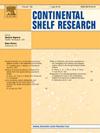Dynamic evolution of tidal networks under the combined effect of de-reclamation and decrease of sediment supply
Abstract
De-reclamation is a common strategy used for the restoration of tidal flats. In this study, we investigate the morphodynamic response of tidal channel networks and tidal flats after de-reclamation initiatives using the Delft3D numerical model. We find that tidal channel networks that have undergone reclamation and retreat projects have a lower drainage density (8.95 km−1) than that of channel networks that formed naturally (11.33 km−1), and the drainage efficiency of natural formed channel networks is almost three times greater than restored channel networks. These findings indicate that de-reclamation alone cannot fully erase the imprinting of the previous reclamation. We also find that the ultimate effectiveness of de-reclamation is affected by the geographical layout and unchanneled path length of the inchoate main creek system. In addition, following the implementation of de-reclamation, the immediate opening of previously enclosed areas amplifies the tidal prism, thereby intensifying tidal scouring and resulting in significant erosion, with erosion rate reaching hundreds of millimeters per day. Such losses can be remediated under sufficient sediment supply and prevented through the construction of artificial channels. However, this severe erosion may escalate under an insufficient sediment supply or a heightened tidal prism, potentially leading to permanent loss. These findings constitute an important reference for future engineering practices that support the safety and sustainability of coastal resources.

 求助内容:
求助内容: 应助结果提醒方式:
应助结果提醒方式:


